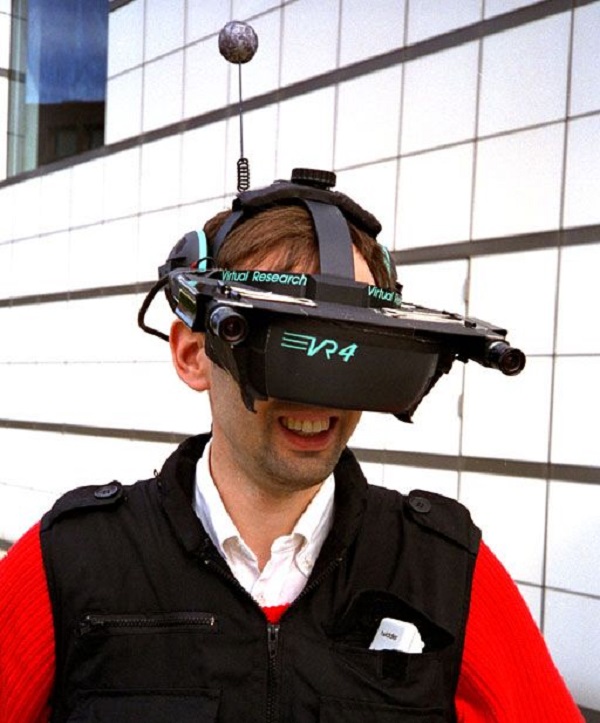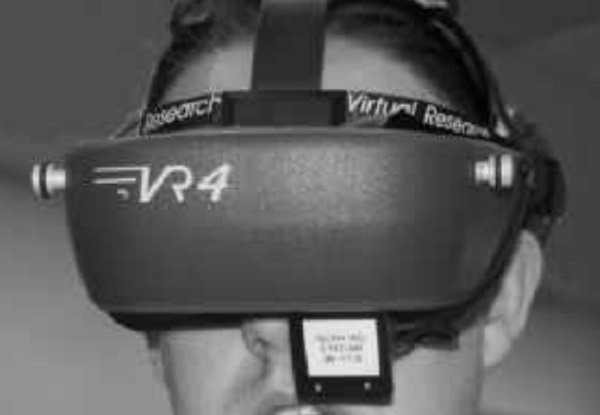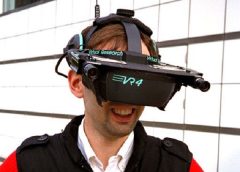
Headset: VR4 Head Mounted Display
Manufacturer: Virtual Research
Platform: Solaris 2.4
Graphics: RS-170 color video display
Cost: $12,000 (£8,852)
Launch Date: March 1994
Other Features: Integrated ASL Series 501 eyetracker.
A Virtual Research Corporation VR4 Head Mounted Display (hmd) unit is used for immersive virtual reality simulations. The VR4 uses 1.3″ active matrix liquid crystal displays that have a 60 degree diagonal field of view. The resolution for each eye is 742 x 230. The hmd takes NTSC signals (640×480) as input, which means that the hmd loses one half of the vertical resolution from the original NTSC signal.

The VR4 weighs only .935 kg and has a rugged outer shell that makes it ideal for undergraduate lab use. The HMD also has audio headphones with excellent 3D audio spatialization. Comparisons of commercially available HMD can be found in its operating system which is Solaris 2.4.
Other software includes Sense8 Corporation’s WorldToolkit Virtual Reality software for Virtual World Modeling, the 3D Studio graphics modular system used to build 3D models and textures on the Pentium systems. All programming code is written in SUN ‘C’ using the Sense8 WorldToolkit library calls
The display quality was quite high, close to that of a good television monitor (e.g. almost as good as a colour CRT). Adjustment knobs for head size made it very easy to have someone else quickly try it on. Two separate inputs are provided, one for each eye, and there is a stereo/mono switch which makes it easy to quickly test a single video input, feeding it to both eyes. There was also a buffered monitor output on the left channel to plug into an external TV set or the like. The input can be either component (YC) or RGB RS-170 video. The supply voltage is 16 volts and it come with a lightweight, high-efficiency switching power supply for operation from 120 volts AC.
